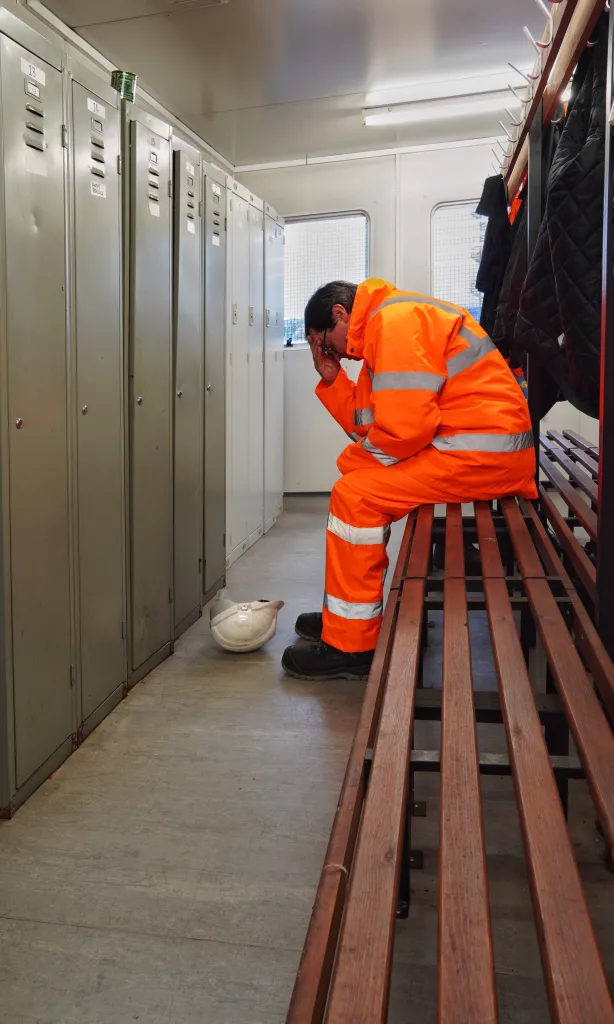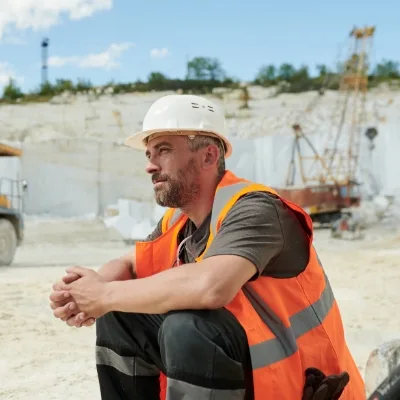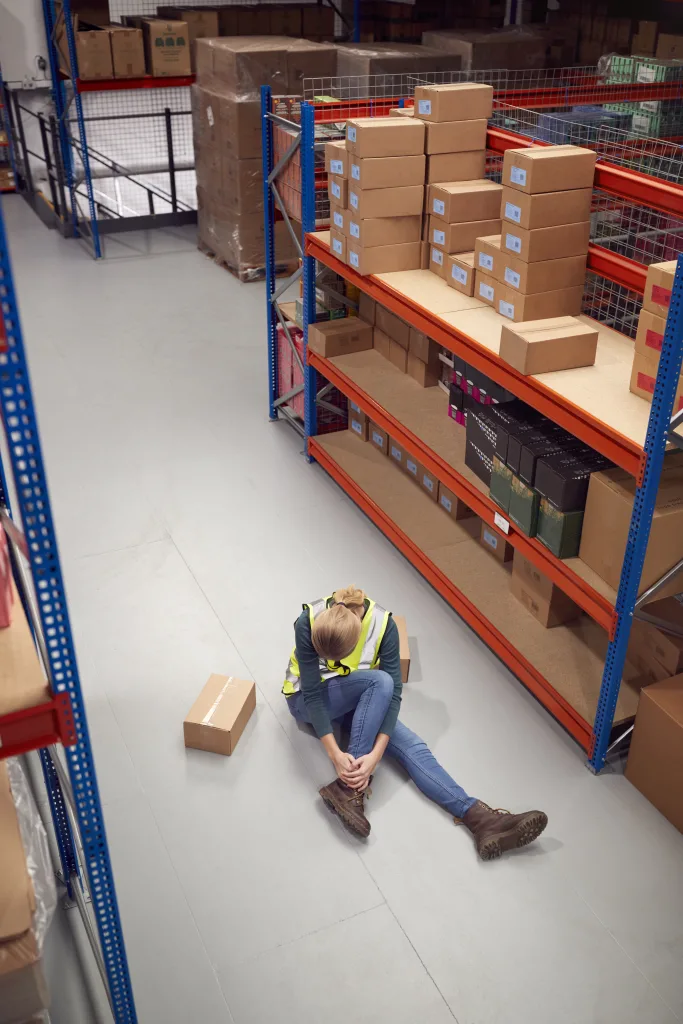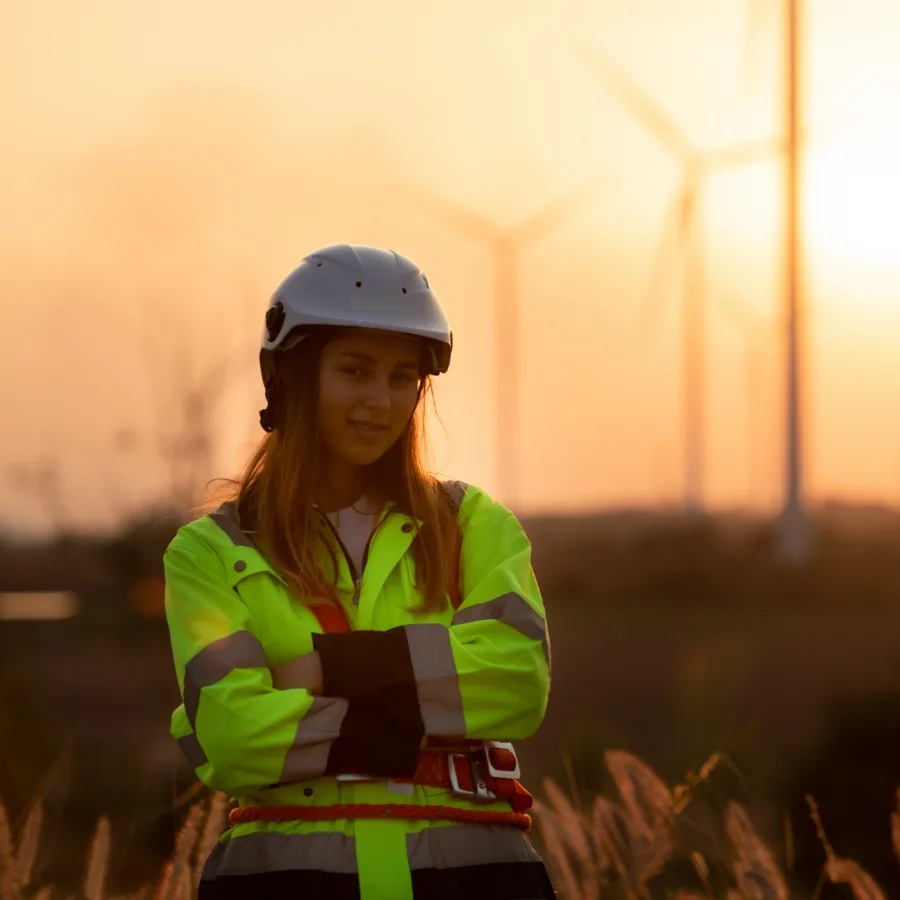Home > Knowledge Hub > Blog
Understanding ATEX: Protecting Workers in Explosive Atmospheres
Safety in potentially explosive environments isn’t optional – it’s essential. Whether you’re responsible for lone worker safety, or operational compliance, understanding ATEX is key to reducing risk and safeguarding lives.
In this blog, we’ll answer some of the most frequently asked questions about ATEX regulations, equipment standards, and how the right lone worker devices can play a vital role in protecting staff operating in hazardous zones. From legal obligations to practical safety solutions, we’ll guide you through what you need to know to maintain a compliant and secure workplace.
What does ATEX mean?
ATEX stands for “ATmosphères EXplosibles” and refers to a set of safety standards originally developed under European Union directives to control the risk of explosion in hazardous environments.
In the UK, following Brexit, these requirements have largely been retained under the UK’s own legislation and now fall within the scope of the UKCA (UK Conformity Assessed) marking system.
The two key frameworks are:
- The ATEX Product Directive (2014/34/EU) – now implemented in Great Britain via UK regulations, this governs how equipment and protective systems intended for use in explosive atmospheres must be designed and manufactured.
- The ATEX Workplace Directive (1999/92/EC) – mirrored in the UK under the Dangerous Substances and Explosive Atmospheres Regulations (DSEAR) 2002, which outlines how workplaces should manage and control explosive risks.
These standards are especially relevant for safety-critical devices like lone worker devices and man-down devices used in ATEX zones. Equipment must be built and certified to prevent ignition sources and operate safely in explosive atmospheres, ensuring the protection of both people and infrastructure.

What are ATEX Zones?
ATEX zones are used to classify areas where explosive atmospheres may occur, helping employers and duty holders choose the right equipment and implement appropriate safety measures. These zones are defined by the likelihood and duration of the presence of flammable gases, vapours, mists, or dust.
This classification system is a key part of the Dangerous Substances and Explosive Atmospheres Regulations (DSEAR) 2002, which require UK employers to assess and control risks in potentially explosive atmospheres.
Zone classifications for gases, vapours and mists:
Zone 0
An explosive atmosphere is present continuously, for long periods, or frequently. Example: Inside tanks or containers storing petrol or solvents.
Zone 1
An explosive atmosphere is likely to occur occasionally during normal operation. Example: Areas around pipework joints or filling points where vapours may be released.
Zone 2
An explosive atmosphere is not likely to occur in normal operation, and if it does, it will only persist for a short time. Example: Spaces near ventilation systems or equipment prone to minor leaks.
Zone classifications for combustible dusts:
Zone 20
A dust cloud capable of forming an explosive atmosphere is present continuously or for long periods. Example: Inside industrial mixers or silos for fine powders such as flour or sugar.
Zone 21
An explosive dust atmosphere is likely to occur occasionally during normal operation. Example: Around machinery where dust is released during processing.
Zone 22
A dust atmosphere is not likely to occur, and if it does, it will only exist briefly. Example: Areas where dust may build up and become airborne during cleaning or maintenance.
Why is ATEX zone classification important?
Correct zoning is essential to:
- Select the appropriate ATEX-certified equipment, including lone worker and man-down devices that won’t act as ignition sources.
- Implement effective risk control measures as required by DSEAR.
- Protect your employees, premises, and operational continuity.
ATEX zones form the foundation for a compliant and safe working environment in high-risk industries such as petrochemical, pharmaceutical, food processing, and manufacturing.
What are the ATEX Equipment Categories?
ATEX equipment categories define the level of protection provided by electrical and non-electrical equipment intended for use in potentially explosive atmospheres. These categories were originally established under the EU ATEX Product Directive (2014/34/EU) and are still mirrored in the UK under domestic regulations following Brexit.
In Great Britain, ATEX equipment must now carry the UKCA (UK Conformity Assessed) mark instead of the CE mark (though CE marking may still be accepted in Northern Ireland).
Equipment Groups and Categories
ATEX classifications are divided into two main equipment groups, based on the environment in which the equipment is used:
Equipment Group I – Underground Mining
This group covers equipment used in underground mines and surface installations that are exposed to firedamp (methane) and/or combustible dusts.
Category M1
Equipment must offer a very high level of protection. It must remain safe and operational even when faults occur, including during rare malfunctions.
Category M2
Equipment must offer a high level of protection. It is designed to be de-energised in the event of an explosive atmosphere and should not be operated when such conditions are likely.
Equipment Group II – Surface Industry
Group II applies to equipment used in industries above ground, such as chemical plants, oil refineries, paint manufacturers, food processing plants, and grain handling facilities.
Category 1
Very high level of protection – for use where explosive atmospheres are present continuously, frequently, or for long periods (e.g., Zone 0 or Zone 20).
Category 2
High level of protection – for areas where explosive atmospheres may occur occasionally (e.g., Zone 1 or Zone 21).
Category 3
Normal level of protection – for areas where explosive atmospheres are likely to occur only rarely or briefly (e.g., Zone 2 or Zone 22).
Hazard Markings
To clarify the type of explosive atmosphere the equipment is suited for, category labels include:
- G – For gas, vapours, or mist
- D – For dust
- M – For methane (specific to mining applications)
Testing and Certification
In the UK, equipment in:
- Category 1 and 2 must undergo conformity assessment by an approved body (formerly called a notified body under EU law).
- Category 3 can be assessed through internal production controls by the manufacturer.
Once successfully assessed, the product may bear the UKCA marking (or CE marking where applicable in Northern Ireland or during any transitional arrangements).
The ATEX categorisation system ensures that all devices used in potentially explosive areas – including lone worker alarms and communication equipment – are rigorously tested for safety, giving employers confidence that they’re protecting their staff and meeting their obligations under DSEAR.


Why is ATEX-Certified Equipment Important?
ATEX-certified equipment plays a vital role in protecting people and operations in potentially explosive atmospheres, also known as Ex areas. In the UK, ensuring that equipment is ATEX-compliant also helps businesses meet their obligations under the Dangerous Substances and Explosive Atmospheres Regulations (DSEAR).
Here’s why it matters:
- Prevents Explosions
ATEX-rated equipment is specifically engineered to avoid becoming an ignition source. It does not emit sparks, heat, or electrical faults that could trigger a fire or explosion. - Protects Lone Workers and Staff
In hazardous areas, personal safety alarms and man-down devices allow lone workers to raise the alarm instantly if something goes wrong—enabling fast, effective emergency response. - Meets UK Legal Requirements
Use of compliant equipment helps satisfy DSEAR regulations and avoid penalties or legal liability in the event of an incident. - Minimises Downtime
By preventing potentially catastrophic incidents, ATEX equipment helps reduce damage to assets and costly interruptions to operations. - Performs Under Pressure
Certified devices are built to function reliably in extreme environments, including high temperatures, heavy dust, and corrosive atmospheres.
Investing in ATEX-certified equipment is not just a compliance measure—it’s a proactive step to protect lives, ensure continuity, and maintain a safe workplace.
Which UK Industries Need ATEX Equipment?
ATEX regulations apply to any UK industry where flammable gases, vapours, mists, or dusts may be present. This includes a wide range of sectors where hazardous atmospheres are part of normal operations.
Key industries include:
- Chemical and Petrochemical
Flammable substances such as solvents and hydrocarbons create explosion risks during manufacturing and processing. Certified lone worker systems support emergency response in high-risk zones. - Oil and Gas
Onshore and offshore sites frequently handle methane, propane, and other volatile compounds. ATEX-compliant safety devices protect staff during drilling, refining, and storage. - Mining
Underground environments are prone to explosive gases and combustible dust. Equipment must meet the highest safety category standards to protect miners and ensure operational safety. - Food and Agriculture
Fine organic dust (e.g., flour, grain, sugar) can form explosive clouds in silos and mills. ATEX-compliant personal alarms are a key part of risk mitigation strategies. - Wood and Metalworking
Dust from cutting, sanding, or grinding materials can ignite under the right conditions. Industries working with aluminium, magnesium, or fine wood dusts must use certified equipment to reduce the risk of fire or explosion.
No matter the sector, ATEX-certified devices are essential for safeguarding personnel and fulfilling employers’ duties under DSEAR and Health & Safety at Work legislation.
How is ATEX Equipment Certified in the UK?
ATEX certification is a rigorous process that confirms equipment is safe to use in explosive environments. In the UK, this is regulated under domestic legislation that mirrors the ATEX Product Directive (2014/34/EU), with conformity assessed via the UKCA marking system.
Step 1: Classification
First, the manufacturer determines:
- The ATEX zone where the equipment will be used
- The category of protection required (1, 2, or 3)
- Whether the product is electrical or non-electrical
Step 2: Certification Routes
Depending on the category and type of equipment, different certification procedures apply:
Category 3 Equipment
Suitable for low-risk zones (e.g., Zone 2 or 22). Manufacturers can self-declare compliance through internal production control, following UK regulations.
- Category 2 Equipment (Electrical)
Requires UK-approved body assessment. The product must be tested, and the manufacturing process audited by the body. - Category 2 Equipment (Non-Electrical)
The manufacturer must submit technical documentation to an approved body but can carry out internal production control independently. - Category 1 Equipment (All Types)
Used in the highest-risk zones (Zone 0 or 20), this equipment must undergo full type examination and production oversight by an approved body.
Step 3: Technical Documentation
Manufacturers must compile detailed technical documentation proving compliance with relevant UK regulations. This must be retained for at least 10 years.
Step 4: Certification and Marking
After successful assessment, the product receives:
- A type examination certificate
- Authorisation to display the UKCA mark (or CE mark in Northern Ireland if applicable)
- A formal declaration of conformity
ATEX certification ensures that the equipment you rely on—such as gas detectors, personal alarms, or communication tools—won’t become an ignition source in explosive atmospheres. It’s a cornerstone of both compliance and safety in high-risk industries across the UK.
What Are Manufacturers’ Responsibilities Under UK ATEX Regulations?
In the UK, manufacturers placing equipment on the market for use in potentially explosive atmospheres must comply with the UK Product Safety and Metrology Regulations, which implement the principles of the former ATEX Directive 2014/34/EU.
Key responsibilities include:
- Designing and manufacturing equipment to prevent ignition in explosive atmospheres.
- Conducting risk assessments and testing the equipment in line with its ATEX category (1, 2, or 3).
- Completing a conformity assessment—this may involve internal production control or third-party evaluation by a UK-approved body, depending on the equipment’s category and risk level.
- Applying the UKCA mark (or CE mark in Northern Ireland) to demonstrate compliance.
- Providing a Declaration of Conformity and retaining technical documentation for at least ten years.
Failure to meet these requirements can result in serious legal consequences. If a defective product causes an explosion, the manufacturer could face liability claims, compensation demands, or criminal charges.
What Are Operators’ Responsibilities Under UK Law (DSEAR)?
In the UK, employers and operators are governed by the Dangerous Substances and Explosive Atmospheres Regulations (DSEAR) 2002, which align with the objectives of the former ATEX Workplace Directive 1999/92/EC.
Operator obligations include:
- Risk Assessments
Employers must assess their premises to identify any areas where explosive atmospheres may occur and classify them into appropriate ATEX zones (e.g., Zone 0, 1, 2 for gases; Zone 20, 21, 22 for dusts). - Use of ATEX-Certified Equipment
Only equipment that is certified for the relevant ATEX zone may be used in those areas. - Implementing Safety Measures
Employers must introduce explosion prevention and protection measures, including signage, training, regular maintenance, and emergency procedures. - Documentation
An Explosion Protection Document must be maintained, detailing all assessments and preventive strategies.
Non-compliance with DSEAR can result in fines, legal liability, enforcement notices, or invalidation of insurance in the event of an incident.


How Do I Know if a Device Is ATEX-Certified?
ATEX-certified equipment is marked with a distinctive hexagonal “Ex” logo, indicating that it has passed stringent safety testing for use in explosive atmospheres.
 Key identifiers of genuine ATEX certification:
Key identifiers of genuine ATEX certification:
- The “Ex” Symbol
Signifies that the equipment has been designed and tested to prevent ignition in hazardous areas. - ATEX Category and Zone Markings
The label will include a code such as “II 1G” or “II 2D,” which tells you what type of environment the device is certified for (e.g., gases or dust, and which zone). - Manufacturer’s Information and Approval Body Code
Indicates which UK-approved (or EU-notified) body carried out the conformity assessment. - UKCA or CE Mark
The UKCA mark confirms conformity for sale in Great Britain, while CE is required for Northern Ireland or EU markets.
These markings are not just legal requirements—they are also a clear indication that the device has been manufactured to operate safely in high-risk environments, including use by lone workers, emergency responders, and plant operators.
How Do ATEX Devices Prevent Explosions?
ATEX-certified devices are specifically engineered to prevent ignition in hazardous environments. Their design ensures that they do not become a source of sparks, heat, or electrical faults that could ignite explosive atmospheres.
Key safety features include:
- Elimination of Ignition Sources
ATEX equipment avoids sparking, arcing, and excessive heat, all of which could cause explosions. - Robust Enclosures
Devices are constructed with sealed housings that contain internal faults and prevent the release of ignition energy. - Electrostatic Protection
Use of conductive materials and proper grounding reduces the build-up of static electricity. - Strict Certification Testing
Every ATEX-certified product undergoes comprehensive testing by a UK-approved (or EU-notified) body, ensuring it performs safely under real-world conditions.
These measures help protect not only lone workers and operators, but also critical equipment and the wider operational infrastructure in explosive risk zones.
What Are the Main Types of ATEX Protection?
There are several internationally recognised types of protection that determine how a device can safely operate in a potentially explosive atmosphere. These are defined by standards such as IEC/EN 60079, and are applied depending on the nature of the hazard—gas, vapour, mist, or dust.
1. Increased Safety (“e”)
Electrical components are reinforced to prevent arcs, sparks, or hotspots. Common in terminal boxes and lighting.
2. Flameproof Enclosure (“d”)
The enclosure contains any internal explosion and prevents it from igniting the surrounding atmosphere. Widely used in motors and switchgear.
3. Intrinsic Safety (“i”)
Limits energy within the circuit so that even under fault conditions, it cannot cause ignition. Ideal for sensors, portable devices, and control systems.
4. Encapsulation (“m”)
Sensitive components are embedded in resin or similar materials to isolate potential ignition sources.
5. Pressurised Enclosure (“p”)
Keeps the enclosure under pressure using clean air or inert gas (like nitrogen), preventing entry of hazardous gases or dust.
6. Oil Immersion (“o”)
Components operate in an oil-filled compartment that prevents sparks from reaching flammable atmospheres.
7. Non-Sparking Design (“n”)
Used in lower-risk zones (e.g., Zone 2), this protection limits the risk through careful design to avoid ignition-capable energy.
8. Dust-Tight Enclosure (“t”)
Prevents dust ingress and eliminates ignition risk in dusty environments. Crucial for food, agricultural, and wood processing sectors.
Understanding these protection types helps ensure that the right device is selected for the right zone—whether for Zone 1 (gases), Zone 21 (dusts), or Zone 0/20 (continuous risk).
Which ATEX Zones Is the SafeTouchEx Emergency Smartphone Suitable For?
The SafeTouchEx smartphone from Almas Industries is certified for use in Zones 1/21 and 2/22. This means it can be safely used in environments where there is a risk of explosive atmospheres due to the presence of flammable gases, vapours, or combustible dust.
It is ideally suited for:
- Petrochemical plants
- Food and agricultural processing
- Paint or chemical manufacturing
- Gas storage and distribution sites
With built-in lone worker protection, man-down detection, and emergency alerting, the SafeTouchEx ensures that workers stay connected and protected in high-risk environments.
Which Regulations Apply in the UK and Who Is Responsible for Compliance?
Unlike Europe, where explosion protection is governed by VEXAT, in the United Kingdom, the relevant legal framework is the:
Dangerous Substances and Explosive Atmospheres Regulations (DSEAR) 2002
These regulations implement key safety requirements for managing explosive atmospheres in UK workplaces. They are enforced by the Health and Safety Executive (HSE).
Employer Responsibilities Under DSEAR:
- Identify and classify hazardous zones (e.g., Zone 0, 1, 2 for gases; Zone 20, 21, 22 for dust).
- Conduct and document risk assessments.
- Implement control and mitigation measures—both technical and organisational.
- Use only ATEX/UKCA-compliant equipment appropriate for the zone classification.
- Provide regular training for staff who work in or near hazardous areas.
- Create and maintain an Explosion Protection Document, which outlines zoning, assessments, and safety procedures.
Who is legally responsible?
The employer or duty holder is legally responsible for ensuring DSEAR compliance. They must:
- Ensure safe working conditions.
- Select and maintain certified equipment.
- Train and inform staff on explosion risks.
- Review and update safety documentation as needed.
Non-compliance can lead to enforcement action by the HSE, including fines, prosecution, or shutdown of operations.
Almas Industries: Your Partner in Lone Worker Safety
At Almas Industries, we specialise in providing tailored solutions to protect lone working across the UK. Our range of products includes:
- Safety Watch: Wearable devices that offer real-time monitoring and emergency alerts.
- Lone Worker App+: A mobile application designed to keep lone workers connected and safe.
- 24/7 Monitoring Services: Our Alarm Receiving Centre (ARC) ensures immediate response to any alerts or emergencies.
With our expertise and commitment to safety, we help businesses comply with legal requirements and, more importantly, protect their most valuable asset, their employees.
Don’t wait until it’s too late. Ensure the safety of your lone workers today with Almas Industries and get in touch today!

Social Media
For all the latest Lone Worker news from Almas Industries follow our social media!
We're Serious About Lone Worker Safety
Our goal is to understand your lone workers unique needs and deliver bespoke solutions that are effective and keep you compliant with Health and Safety legislation.
Protect Your Lone Workers Now
Get advice on the solution that aligns with your operational structure, geographical spread of lone workers, and your operational hours.

Contact us today to work with a leader in UK Lone Worker Protection.



